A thorough understanding of electronic measurement tools is essential to ensure the success of electronic designs.
There are various electronic measurement tools and equipment. We have a voltmeter, ammeter, ohm meter, and multimeter to measure current, voltage, and resistance. To generate different amplitude and frequency signals we have a signal generator also known as a function or frequency generator. Other measuring tools are an oscilloscope, LCR meter, logic analyzer, clamp meter, capacitor tester, and ESR meter.
In this article, we’ll explore the electronic measurement tools and equipment that form the backbone of accurate and reliable electronic measurements.
Measurement tools
In the field of electronics, measuring tools and equipment are devices specifically designed to measure and analyze various electrical and electronic parameters.
These tools play a crucial role in designing, testing, maintaining, and troubleshooting electronic circuits and systems.
They provide accurate and precise measurements of voltage, current, resistance, frequency, capacitance, and other electrical characteristics.
Measuring tools and equipment in electronics include a wide range of devices, each serving a specific purpose.
Here are some common electronic measuring tools and equipment.
1. Voltmeter
As you can see the name ‘voltmeter’, stands for voltage so it is a device to measure the voltage in the circuits.

A voltmeter is an essential electronic instrument designed to measure the voltage across two points in an electrical circuit. The voltage is the potential difference between two points.
The working principle of a voltmeter involves connecting it in parallel with the part of the circuit where you want to know how much voltage is applied.
The voltmeter has two types: Analog and Digital voltmeter. The analog voltmeter has a needle pointing toward the measured voltage (the above voltmeter is an example of an analog voltmeter.
On the other hand, we have a digital voltmeter, which shows the measured voltage level in digits.
2. Ammeter
An ammeter is a crucial electronic measurement tool for measuring electric current flowing through a circuit. It’s designed to provide accurate readings of current, typically in amperes (A).
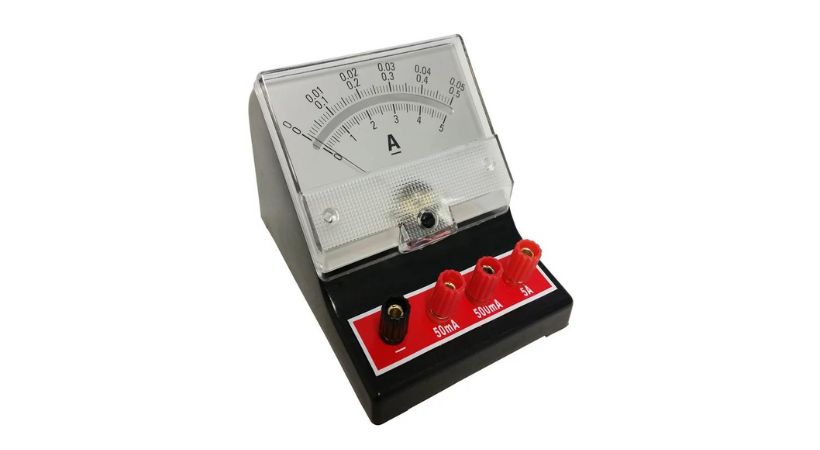
Ammeters come in various types, including analog and digital variants, but they all operate on the same fundamental principle.
To measure the current in the circuit, the ammeter should be connected in series across the circuit. The ammeter is designed in millimeter, picometer, or micrometer.
3. Ohm meter
An ohmmeter is a specialized instrument used to measure the electrical resistance of a component or circuit.
Its primary purpose is to determine how much opposition a material offers to the flow of electrical current. Just like a voltmeter and ammeter, it also has analog and digital versions.
The analog ohm meter has a needle and it shows the measured resistance across the resistor. The digital one has an analog-to-digital converter which converts the analog resistance to the digital and displays it on the screen.
In practical terms, when you connect an ohmmeter to a component, it applies a small, known voltage across the component.
The ohmmeter then measures the resulting current flowing through the component. Based on this measured current and the known voltage applied, it calculates the resistance of the component using Ohm’s Law.
4. Multimeter
As the name suggests, the multimeter is the types of measuring tool that perform multiple tasks. It combines multiple measurement functions into one device, typically including voltage, current, and resistance.
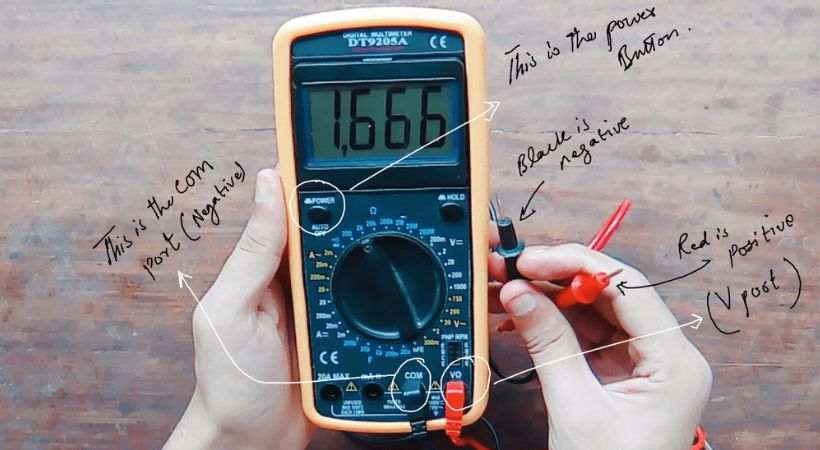
The working principle of a multimeter is relatively straightforward. At its core, a multimeter contains several components: a display screen, a selection dial or buttons for choosing the measurement function, input jacks for connecting test leads or probes, and internal circuitry for processing signals and displaying results.
The selection dial is used to select the mode of the multimeter whether you want to measure current, voltage, or resistance.
Most multimeters also have additional functions such as continuity testing, diode testing, and capacitance measurement.
If want to learn more about multimeters check out our article:
We have also reviewed some best multimeters if you want to buy them for yourself.
5. Signal generator
A signal generator is a vital tool used in electronics to produce precise electrical signals for testing and analysis.
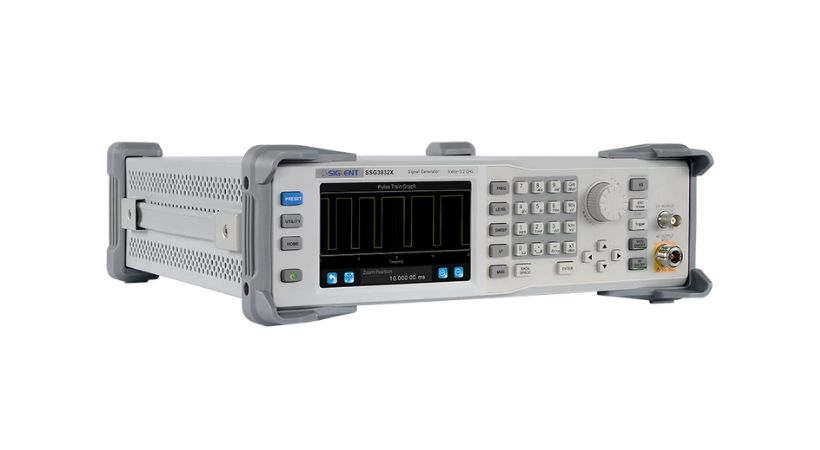
It serves as a source of controlled waveforms, including sine, square, triangle, and more complex signals.
The working principle of a signal generator involves generating electrical signals with specific characteristics such as frequency, amplitude, and waveform shape.
The signal generator has three components, the oscillator, frequency control circuit, and amplitude control circuit.
The oscillator generates the basic waveform, usually a sine wave, and the other two components are used to control or change the amplitude and frequency of the signal.
6. Oscilloscope
An oscilloscope is a powerful electronic instrument used to visualize and analyze electrical signals in various electronic circuits.
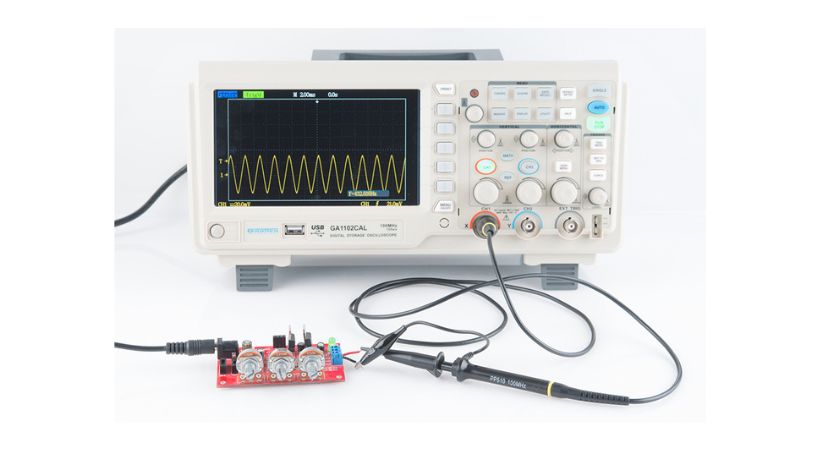
The multimeter gives values of voltage and current, but the oscilloscope gives us visual results to see what happens to the waveform of various electrical parameters over time.
When you connect the oscilloscope’s probes to a circuit, it captures the voltage signal and displays it on the screen in the form of a graph. The horizontal axis represents time, while the vertical axis represents voltage.
The key feature of an oscilloscope is its ability to capture and display repetitive signals accurately.
7. LCR meter
The LCR meter is a specialized meter that is designed to measure the inductance, capacitance, and resistance in the circuit. It can perform three functions which make it a very essential tool.

The working principle of an LCR meter involves applying an AC (alternating current) voltage or current to the component under test and measuring the response of the component.
For components like multi-layer ceramic capacitors (MLCC), electrolytic capacitors, inductors, coils, transformers, RFID, and piezoelectric elements the LCR meter is very useful.
8. Clamp meter
A clamp meter, also known as a current clamp or amp meter, is a versatile tool used by electricians and technicians to measure electrical current in a circuit without the need to break the circuit itself.
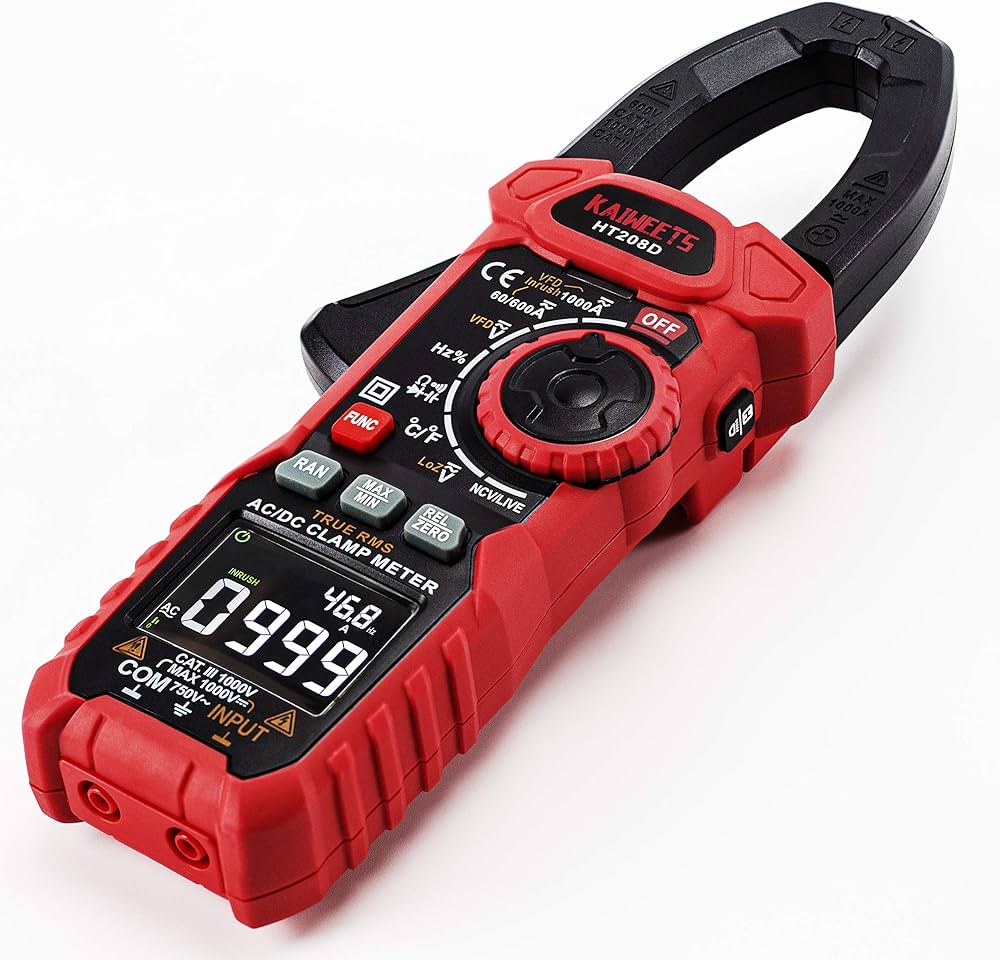
Unlike traditional multimeters that require direct contact with wires, a clamp meter can measure current by simply clamping around the wire carrying the current. This makes it incredibly convenient and safe for measuring current in live circuits.
The working principle of a clamp meter relies on electromagnetic induction. Inside the clamp meter’s jaws, there is a coil of wire connected to the instrument’s circuitry.
When the jaws are clamped around a wire carrying electrical current, the magnetic field generated by the current passing through the wire induces a voltage in the coil.
According to Faraday’s law of electromagnetic induction, this induced voltage is proportional to the current flowing through the wire.
Overall, clamp meters provide a safe, convenient, and accurate method for measuring electrical current in various electrical systems and applications.
9. Capacitor tester
Capacitors are electronic components used to store and release electrical energy. A capacitor tester is a specialized tool designed to measure the capacitance of capacitors accurately.

A capacitor tester typically consists of a display screen, test leads, and circuitry capable of applying a test voltage to the capacitor under test.
The working principle of a capacitor tester involves applying a known test voltage to the capacitor and measuring the resulting charge stored in the capacitor.
The capacitor tester can also measure the leakage current and equivalent series resistance, these parameters can affect the performance of the capacitor.
10. ESR meter
An ESR meter, which stands for Equivalent Series Resistance meter, is a specialized tool used in electronics to measure the equivalent series resistance of capacitors.
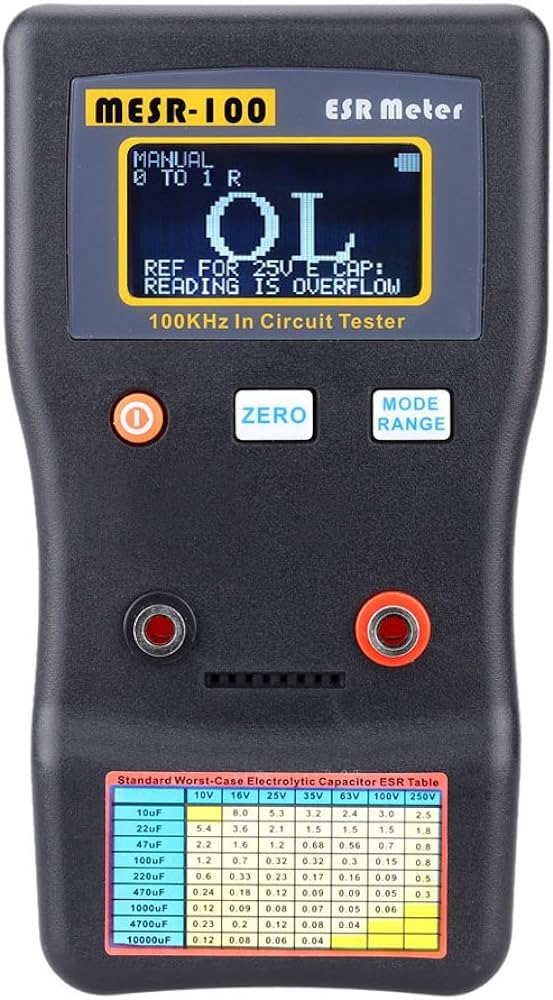
The equalient series resistance is the internal resistance of the capacitor which affects the functionality and performance of the capacitor.
The working principle of an ESR meter involves passing a small alternating current (AC) signal through the capacitor under test and measuring the voltage drop across it.
By analyzing the phase shift between the current and voltage signals, the ESR meter calculates the equivalent series resistance of the capacitor.
Want to buy an ESR meter, see our article:
11. Component tester
A component tester is a specialized electronic device used to test and analyze various components, which are crucial components in electronic circuits.
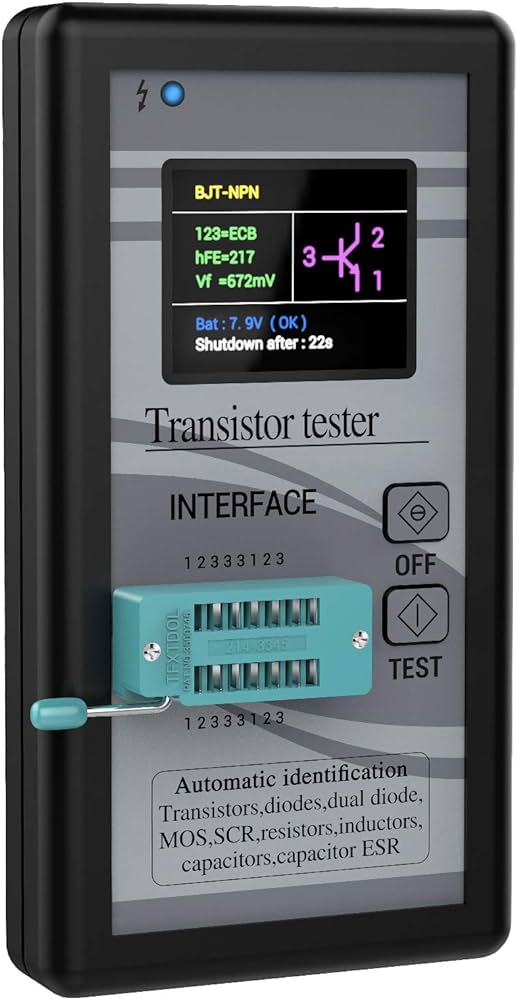
These testers are designed to determine various characteristics of transistors, including their type (NPN or PNP), pinout configuration, gain (hFE), and sometimes other parameters like leakage current and breakdown voltage.
Component testers make testing transistors other componets easier by automating the measurement process and delivering data that are easy to understand.
For electrical enthusiasts, technicians, and engineers, these are indispensable instruments that accurately measure components quality and performance.
Here is an article about the best transistor tester.
Conclusion
In electronic and electrical engineering, we have to work with various circuits and components. Working with circuits means we have to measure the range of voltage and current flowing in the components of the circuit.
There are various electronic measuring tools and equipment. Each one has its distinct function, some are also multifunctional. The multifunctional tools allow us to keep one instead of different tools for every function.
Some of the fundamental electronic tools are
- Voltmeter
- Ammeter
- Ohm meter
- Multimeter
- Signal generator
- Oscilloscope
- LCR meter
- Clamp meter
- Capacitor meter
- ESR meter
- Component tester
As technology advances these fundamental tools remain essential for the ever-evolving field of electronics.
This was all about the electronic measuring tools, I hope it will be helpful for you.
Thank you and stay blessed…
Other useful posts:
